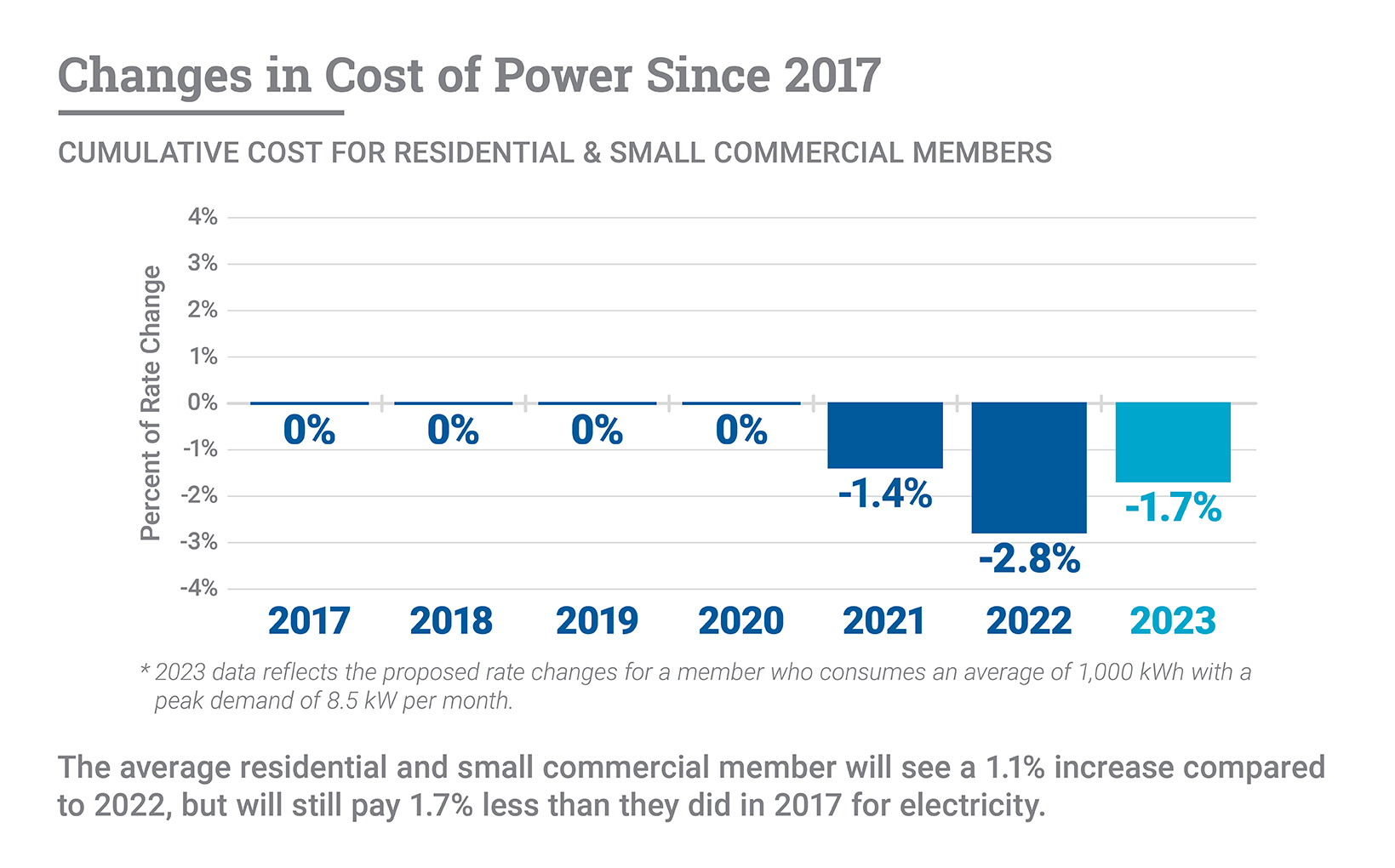
Proposed rate changes to Schedule A – Farm & Residential and Schedule B – Small Commercial that were discussed during the recent public forum were approved.
Starting with January 2023 bills, members can expect to see the following changes as listed in the bulleted list below. Please keep reading this article for further information about each bulleted item. Or read this article for additional rate change facts and figures.
The overall impact of permanently lowering the kWh cost and implementing a peak demand charge to the average residential and small commercial member would equal a 1.1% increase per month compared to 2022. For the average residential member, this translates to an increase of $1.28 per month.
All residential and small commercial members will still pay 1.7% less for electricity than they did in 2017.

Your cooperative has had two rate decreases in the past two years. In total, they equaled a cumulative decrease of 2.8%. These rate reductions were applied to member bills as a Power Cost Adjustment line item.
Now, we are solidifying these reductions into our rate structure to permanently lower your kWh. The kWh cost for the Farm & Residential rate will decrease from $0.09396 to $0.09108. The kWh cost for the Small Commercial rate will decrease from $0.09489 to $0.09201.
For a further breakdown of changes and estimated impacts of lowering the kWh cost, please read the article here.
Member bills starting in January 2023 will have a peak demand charge of $0.15 per kW based on the peak demand of electricity.
Peak demand measures the maximum amount of electricity used at one time in a 15-minute window during the billing month.
For a breakdown of the peak demand change and estimated impacts to member bills, please read the article here.
Energy demand is the term used to describe your use of electricity. It drives our whole energy system, impacting the total amount of energy used, the location and types of fuels used to generate your energy, and the technologies you use to consume our energy.
Peak demand occurs when you use the most electrical devices at your disposal simultaneously. Think of it as the highest amount of energy you demand from us all at once.
Like any product, when there is a higher demand, there is a higher cost for that product. As more and more members use electricity all at once, we are required to provide adequate energy to meet those needs – increasing our total cost of purchased power.
You can find your peak demand on your bill or in your online account – click here to learn exactly where to look. You can also see exactly what date and time you are using the most electricity.
Armed with this information, you can use our resources to understand how you can spread your energy use throughout the day to help reduce your peak demand and monthly electric bill.
The off-peak kWh cost will be reduced by adopting the cumulative 2.8% rate decrease and the on-peak kWh cost will increase by 1.1%.
A more detailed explanation of the changes can be found online here.
The following pilot rates were set to expire with December 2022 billing and will not continue in 2023: Farm & Residential Dual Meter (ADM), Small Commercial Dual Meter (BDM), Farm & Residential Interruptible (AI), and Small Commercial interruptible (BI).
There will be a six-month extension of the Farm & Residential Super Time-of-Use (ASTOU) and Small Commercial Super Time-of-Use (BSTOU) pilot rates.